Vastus medialis muscle: Anatomy, Origin, Insertion, Function, Exercises
Table of Contents
Introduction
- The Vastus medialis muscle is a large quadriceps muscle situated on the inner side of the thigh, also known as the teardrop muscle. It is the most medial of the 3 muscles of the quadriceps (thigh) group. It is situated in front of the rectus femoris & behind the vastus lateralis.
- The muscle is responsible for the straightening of the knee joint. It is a portion of the extensor mechanism of the knee.
- The muscle is more fully working when the knee is at a nearly 30 angle, especially when the leg is partially extended. Therefore, quadriceps exercises that involve a last 30 degrees of angle movement exercise are the best to strengthen this muscle.
- Physiotherapists focus more on the strengthening of the Vastus medialis as compared to other Quadriceps groups of muscle mainly due to its work on the end range of knee extension (Last 30 Degree Knee Extension).
Origin:
It originates from the,
- The lower part of the intertrochanteric line,
- along with the spiral line to the medial lip of the linea aspera
- the medial intermuscular septum & the aponeurosis of the adductor Magnus.
Insertion:
- It inserts into the medial side of the quadriceps tendon, joining with rectus femoris, vastus lateralis, & vastus intermedius muscles, enveloping the patella, then by the patellar ligament into the tibial tuberosity.
Nerve Supply
Femoral Nerve (A branch from the posterior division) – Nerve Roots are from L2, L3 & L4.
Blood supply
- Vastus medialis is supplied by 3 muscular branches of the femoral artery. It also receives some minor contributions from the deep femoral & descending genicular arteries.
Structure
- The vastus medialis is a muscle in the anterior compartment of the thigh, & is one of the 4 muscles that make up the quadriceps muscle. The other muscles are the vastus lateralis, vastus intermedius & rectus femoris. It is the most medial of the vastus grouping of muscles. The vastus medialis arises medially along the entire length of the femur, & attaches with the other muscles of the quadriceps in the quadriceps tendon.
- The vastus medialis muscle originates from a continuous line of attachment on the femur, which begins on the front & middle side (anteromedially) on the intertrochanteric line of the femur. It resumes down & back (posteroinferiorly) along the pectineal line & then descends along the inner (medial) lip of the linea aspera & onto the medial supracondylar line of the femur. The fibers converge onto the patella’s inner (medial) part of the quadriceps tendon & the inner (medial) border.
- The obliquus genus muscle is the most distal part of the vastus medialis muscle. Its particular training plays a vital role in keeping the patella position & limiting injuries to the knee. With no clear delineation, it is simply the most distal category of fibers of the vastus medialis.
Function
- The vastus medialis is one of 4 muscles in the anterior compartment of the thigh. It is involved in knee extension, along with the other muscles that make up the quadriceps. The vastus medialis muscle also contributes to the correct tracking of the patella.
- A variance of the vastus medialis muscle into 2 groups of fibers has been hypothesized, a long & relatively inline group of fibers with the quadriceps ligament, the vastus medialis longus; & a shorter & more obliquely oriented group of fibers, the vastus medialis obliquus. There is as yet insufficient evidence to confirm or deny this hypothesis conclusively.
Assessment
Palpation
- It can be palpated along its whole length. Distally, the quadriceps tendon can be palpated attaching to the proximal border (base) of the patella.
Clinical importance
Knee pain
- Knee pain is thought to be primarily related to specific quadriceps muscle weakness or fatigue, especially in the vastus medialis obliquus (VMO). It is called fatigue & can be caused by many different mechanisms, ranging from the accumulation of metabolites within muscle fibers to the generation of an inadequate motor command in the motor cortex. Characteristics of the vastus medialis, including its angle of insertion, correlate with the presence of knee joint pain (patellofemoral pain syndrome). However, this syndrome is complex & definitive evidence of causality has not yet been published.
- Misfiring & fatiguing of the vastus medialis obliquus (VMO) causes mal-tracking of the patella & subsequent damage to surrounding structures creating increased force on the knees, often resulting in injuries such as patellofemoral pain syndrome, and anterior cruciate ligament rupture, chondromalacia, and tendinitis. Through the use of an analysis of muscle activity of the VMO through the use of electromyography, proper rehabilitative plans electromyography, researchers can evaluate & record the electrical activity produced by the skeletal muscle of the vastus medialis obliques to analyze the biomechanics & detect any possible abnormalities, weakness, or fatigue. With & goals can be established to not only correct the already established abnormality but even prevent such injuries if tested sooner. Preventing injuries is crucial as well as teaching proper training techniques to ensure there are no valgus collapse forces causing unplanned stress on other structures of the knee, causing asymmetry, & predisposing that individual for injury.
- Weakness of the vastus medials is associated with patellar maltracking & patellofemoral pain. An approach to treatment attempts to restore the balance between vastus medialis & lateralis, which requires strengthening of the oblique fibers of the medial, as well as assessment of the degree of movement supination & pronation of the foot.
- VMO strengthening has become a less popular approach to the treatment of anterior knee pain as the evidence supporting isolated exercises has been criticized for its poor quality. Afterward, researchers doubt the existence of VMO & have found that any quadricep exercise will similarly activate the vast muscles. Strengthening further up the kinetic chain has been suggested as a more effective approach, Khayambashi et al. established that hip strengthening was more effective for improving patellofemoral pain than knee strengthening.
Vastus Medialis muscle Stretching exercise:
- After the follow of electrotherapy for 2-3 days for release to muscle pain by physiotherapist then the therapist is advised to stretch for release to muscle tightness.
- This stretching is applied when your pain is released & when you feel comfortable.
This all Stretching exercise helps you release muscle pain & tightness
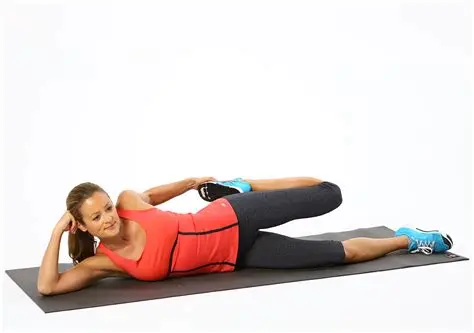
- The Lying Quad Stretch
- The Simple Quad Stretch
- The Kneeling Quad Stretch
- Vastus Medialis Stretch
- The Lying Quad Stretch:
- You are lying in a face-down position & propping the head on the left hand.
- Alternatively, you can lie on the side to perform this stretch.
- After some seconds, pull the right foot toward the butt & bend the left knee joint to stabilize yourself.
- Then Hold onto your ankle joint & maintain this stretching position for 30 seconds.
- Repeat this Stretching exercise 3 times at 1 time & do the 3 times per day.
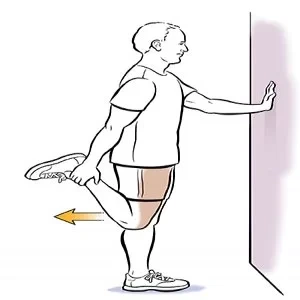
2. The Simple Quad Stretch:
- You are standing on your left leg & with one knee joint touching the other.
- You can hold a chair & the wall to keep the steady if needed.
- Grab the right foot & use your right hand & pull it towards your butt.
- Must Be sure to push your chest up & hips joint forward.
- Try not to worry about pushing the foot too close to your backside.
- But your focus must be on feeling the stretch in your quad muscle & pushing your hip joint forward to get a good hip flexor muscle stretch.
- Hold this stretching position for 30 seconds.
- Repeat this Stretching exercise 3 times at 1 time & do the 3 times per day.
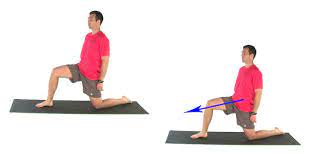
3. The Kneeling Quad Stretch:
- This stretching exercise Start with a high lunge position, with the left foot forward.
- Then Carefully drop your right knee joint to the floor & take a moment the balance.
- When you are ready, reach back with your right arm & grab your ankle joint or toes.
- Hold this stretching position for 30 seconds but must keep the body steady.
- Then Gradually come back into the lunge position & opposite from the left foot to the right foot.
- Repeat this Stretching exercise 3 times at 1 time & do the 3 times per day.
4. Vastus Medialis Stretch:
- You are Stand holding a chair & the wall for balance
- Bring your heel up behind you, grasp your ankle joint & pull your heel towards your buttock, till you are feeling a stretch, without bending forwards
- It is done the stretch all 4 of the quads muscles but for stretch the vastus medialis muscle by moving the foot across the body towards the other buttock.
- You can Increase the stretch by pushing your hip joint forwards in this exercise.
- Repeat this Stretching exercise 3 times at 1 time & do the 3 times per day.
Vastus medialis muscle Strengthening Exercises:
- After the follow of electrotherapy & massage for 2 -3 days for release to muscle pain by physiotherapist then the therapist is advised to you strengthening exercise for release to muscle weakness.
- This strengthening exercise is always advised when you feel to release pain & when you feel comfortable.
This all-strengthening exercise helps you with muscle weakness & pain.
- Lying Pigeon Progression
- The Frog Pose
- Floor extension
- Lateral heel drop
- Step downs
- Leg extension
- Single leg raises
- Terminal knee extensions (TKEs)
- Vastus Medialis activation Exercise
- Ball Clench Extensions
- Twisted Leg Raise
- Ball Bridges
- Ball Wall Squats
- Isometric Contraction of the vastus medialis muscle
- Seated Isometric vastus medialis muscle & Adduction
- Externally Rotated ½ Squats
- Wall/Ball Squat
- Split Squats/Static Lunges
- Step-Ups
- Lying Pigeon Progression:
- In the Lying Pigeon Progression first place, a mat on the floor & you are lying face down.
- Then must be Secure place a resistance band around the affected foot, with the excess band in a reachable area.
- Grab the band with the left hand & keep the right leg extended or bend the left knee joint.
- Must keep your toes pointed toward the ceiling.
- Then use the resistance band to pull forward till you feel the stretch.
- Hold this exercise position for 10 seconds.
- Repeat this strengthening exercise 10 times in 1 time & do the 3 times per day.
2. The Frog Pose:
- The Frog Pose exercise starts by lying on your stomach in a prone position & propping the torso up on your elbow joints.
- Bend both of your knee joints &, and reach back to hold onto your feet.
- You feel the stretching at this point.
- Then Adjust the fingers to point the same way as your toes, then carefully lift your elbow joint to point to the ceiling.
- Push the chest up as high as possible.
- This exercise is Stopped completely when you feel any pain in the hip or knee joint.
- Hold this exercise position for 10 seconds.
- Repeat this strengthening exercise 10 times in 1 time & do the 3 times per day.
3. Floor extension:
- You are sitting down on the floor with a tall posture.
- Your shoulder joint should be pulled down the back with your chest proud.
- Then Bend your left knee joint toward your chest with your left foot flat on the floor.
- Extend your leg in front of you with your foot pointing slightly out to the side.
- Hold under the left knee joint with both hands interlocked & must keep your muscles flexed for the duration of this exercise.
- Do the Exhale Without losing the posture & leaning away from the wall, lift the right leg in the air as high as possible.
- Hold this position for 10 seconds.
- Then Inhale & slowly lower down to your starting position.
- Repeat this strengthening exercise 10 times in 1 time & do the 3 times per day.
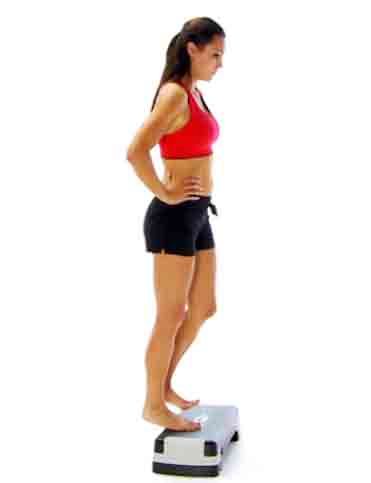
4. Lateral heel drop:
- You are standing tall with your left leg straight but not locked & your foot is resting on a small step.
- Do the right knee joint slightly bent & your left foot should be flat on the floor.
- Your right knee joint must be going over the toes.
- Then Squeeze your core muscle for balance.
- Exhale & push up off the right leg till both legs are fully straightened.
- Try to keep your hip joint level as you step up.
- Inhale then contract your left vastus medialis muscle & slowly return to your starting position.
- Hold this exercise position for 10 seconds.
- Repeat this strengthening exercise 10 times in 1 time & do the 3 times per day.
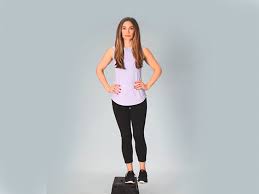
5. Step downs:
- You are standing with the right foot on the step & your left foot off to the side.
- Do the Inhale & Flex the vastus medialis muscle.
- Then bend your right knee joint till your left foot is flat on the floor.
- Must be Again, try to keep your hip joint level at all times.
- Do the Exhale & engage your core muscle.
- Then push off your foot & return to your starting position.
- Hold this exercise position for 10 seconds.
- Repeat this strengthening exercise 10 times in 1 time & do the 3 times per day.
6. Leg extension:
- You are sitting on a chair & scoot yourself to the front of the seat.
- Then Wrap a resistance band around your ankle joint & feed the band under the chair, which you reach back & grab with your hand.
- Do the Exhale & in one motion then slowly extend your leg to full extension out in front of you.
- Then do the Inhale & contract your muscles & slowly lower the leg back down to 30 degrees.
- Hold this exercise position for 10 seconds.
- Repeat this strengthening exercise 10 times in 1 time & do the 3 times per day.
7. Single leg raises:

- You are lying on the back with your knee joint bent & foot flat on the mat.
- Fully extend your right leg out in front of you must be placing an ankle joint weight on your thigh.
- Squeeze your core muscle &contract the vastus medialis muscle & lift the right leg about 2 inches off the mat.
- Must Keep the leg duration of this exercise.
- Make sure you are not arching your back.
- You do not put any space between the back & the mat.
- Hold this exercise position for 10 seconds.
- Repeat this strengthening exercise 10 times in 1 time & do the 3 times per day.
8. Terminal knee extensions (TKEs):
- You Tie a resistance band around a sturdy anchor & slide the other end up to slightly above the back of your right knee joint, facing the anchor.
- Step back till the band is taut.
- Then Straighten your left leg & keep your right knee joint slightly bent.
- Do the Exhale & push your right knee joint back to match your left knee joint & exaggerate the contraction in your vastus medialis muscle.
- Hold this exercise position for 10 seconds.
- Repeat this strengthening exercise 10 times in 1 time & do the 3 times per day.
9. Vastus Medialis activation Exercise:
- You are sitting upright in a chair, with your knee joint bent.
- Place the ball between your knee joint & your feet flat on the floor.
- Then Place your thumbs on the soft, squashy area on the inner side of the knee joint, just above your kneecap – patella & press down firmly
- Then Clench your glutes & gently squeeze the ball.
- Make sure the movement comes from your knee joint rather than the inner thigh.
- If you do not feel stretch must be, try clenching your buttocks, clenching your knee joint & squashing the backs of your thighs down into the chair
- Hold this exercise position for 10 seconds.
- Repeat this strengthening exercise 10 times in 1 time & do the 3 times per day.
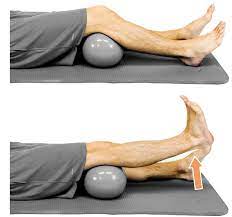
10. Ball Clench Extensions:
- You are lying on your back with a rolled-up towel underneath your knee joint & place the ball between your knee joint.
- Then Clench your buttocks & gently squeeze the ball & lift one heel off the ground till the knee joint is straight.
- Keep clenching the ball & hold for 10 seconds then slowly return to the starting position.
- Repeat this strengthening exercise 10 times in 1 time & do the 3 times per day.
11. Twisted Leg Raise:
- You are lying on your back with one leg stretched out straight & the other knee joint bent.
- It takes the tension off the lower back as you work the straight leg.
- Turn your foot outwards about 20 into external rotation & lift the foot till your thighs are parallel.
- Hold this exercise position for 10 seconds.
- Repeat this strengthening exercise 10 times in 1 time & do the 3 times per day.
- Keep the leg turned outwards in this exercise which is helpful to activate the vastus medialis muscle.
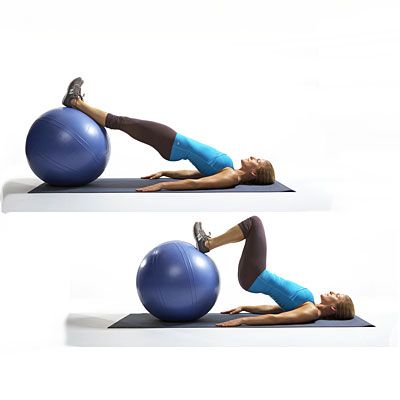
12. Ball Bridges:
- You are lying on your back with your knee joint bent, feet are hip distance apart.
- Place the ball between your knee joints.
- Then Clench your glute muscles & gently squash the ball.
- Lift your bottom as high as possible without arching your back.
- Hold this exercise position for 10 seconds.
- Repeat this strengthening exercise 10 times in 1 time & do the 3 times per day.
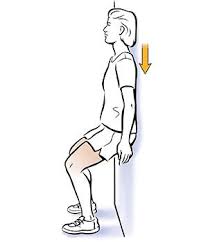
13. Ball Wall Squats:
- You are standing with your back against a wall & squashy ball between your knees joint.
- Must be placed heels about 6? away from the wall & toes are pointing forwards.
- Clench your glutes muscle & gently squash the ball to activate the vastus medialis muscle then slowly slide down the wall, & bend your knee joint.
- Hold this exercise position for 10 seconds.
- Repeat this strengthening exercise 10 times in 1 time & do the 3 times per day.
14. Isometric Contraction of the vastus medialis muscle :
- You are Sitting position on your bed & floor with the legs out straight & place a towel underneath your knee joint.
- Flex your quads muscle with the hip joint /leg slightly externally rotated.
- Hold this contraction for 10 seconds & place your fingers on your VMO to ensure your vastus medialis muscle is activating & firing.
- Repeat this strengthening exercise 10 times in 1 time & do the 3 times per day.
15. Seated Isometric vastus medialis muscle & Adduction:
- You are sitting on a chair & platform where your feet hang freely.
- Place a ball between your thighs & squeeze the ball together activating your vastus medialis muscle.
- Hold this muscle contraction for 10 seconds.
- Repeat this strengthening exercise 10 times in 1 time & do the 3 times per day.
16. Externally Rotated ½ Squats:
- You are standing with your legs shoulder-width apart with the knee joint & feet externally rotated.
- Squat halfway down & come up nice & slowly which focuses on activating the vastus medialis muscle to bring you back up to a standing position.
- Repeat this strengthening exercise 10 times in 1 time & do the 3 times per day.
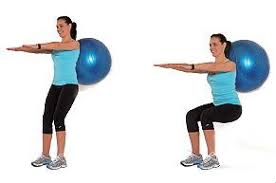
17. Wall/Ball Squats:
- You are placing a Swiss ball on your back against the wall.
- Then Slowly squat down into a near-seated position so that your thighs are parallel to the ground.
- Slowly come back up & avoid locking your knee joint.
- Repeat this strengthening exercise 10 times in 1 time & do the 3 times per day.
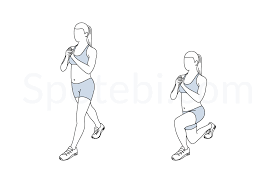
18. Split Squats/Static Lunges:
- Split Squats/Static Lunges exercise is to Start with your feet shoulder-width apart & take one large step forward.
- You can place your hands on your hip joint.
- To make this exercise harder must hold dumbbells by your side.
- With an upright posture, lunge down & up without your knee joint at the front moving in front of your big toe.
- But Focus on putting most of the weight through your front heel &don’t let your knee joint buckle in.
- Repeat this strengthening exercise 10 times in 1 time & do the 3 times per day.
19. Step-Ups:
- You are Standing in front of a bench & chair.
- Step up onto a platform & drive from the gluteal muscle, not from your toe.
- Ensure your knee joint is not buckling inwards.
- It is forced/pushed out.
- Then Slowly step down making sure your knee joint is stable.
- Repeat this strengthening exercise 10 times in 1 time & do the 3 times per day.
FAQ
What exercise works for the vastus medialis?
Floor extension. This exercise isolates the vastus medialis. Sitting tall with proper posture is most important with this exercise.
What happens when the VMO is weak?
The specific role of VMO is to stabilize the patella within its groove & to control of the ‘tracking’ of the patella when the knee is bent & straightened. Mis-firing & weaknesses in the VMO cause mal-tracking of the patella & subsequent damage to surrounding structures & aching pain.
Can tight vastus medialis cause knee pain?
The teardrop-shaped muscle helps move the knee joint & stabilizes the kneecap. Injury to the vastus medialis can cause knee pain & difficulty walking, running, or managing stairs.
How do I activate vastus medialis?
Place a ball between the thighs & squeeze the ball together activating your VMO. Hold the contraction for 10 seconds. Again, feel the VMO to ensure its activation & increase the length of contraction as you become stronger.
Why is my vastus medialis sore?
The VMO is also frequently overloaded with repeated use in the following situations: suddenly increasing the volume of running or cycling (running places around 6 x body weight through the quads) a new (or sudden increase) in an exercise program involving repetitive squats, lunges, leg extensions or wall sits.


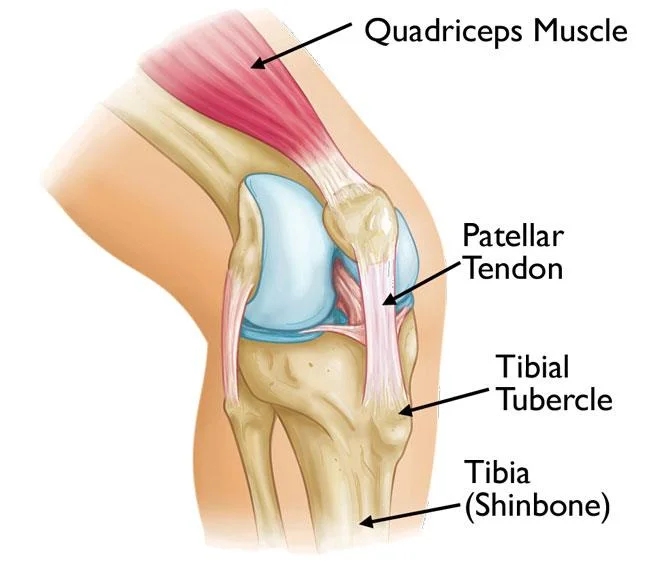
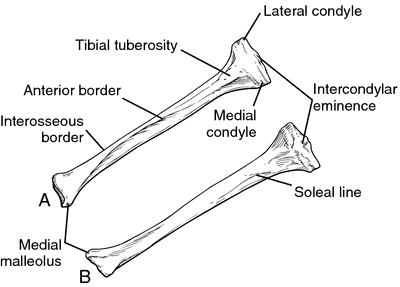
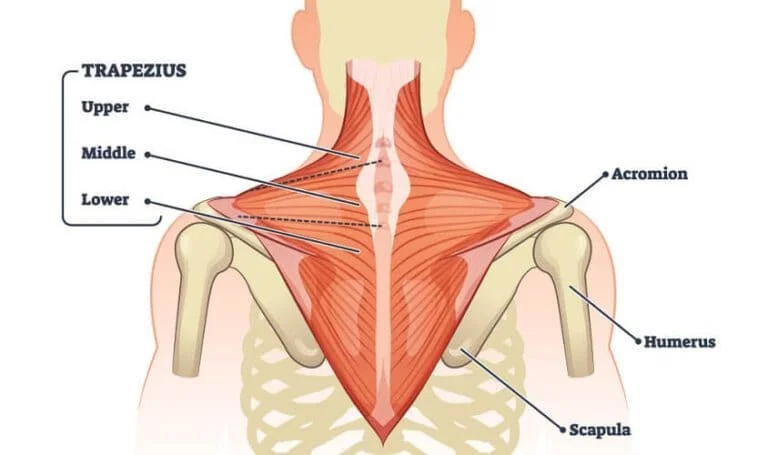

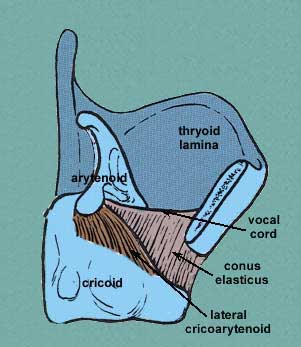
3 Comments